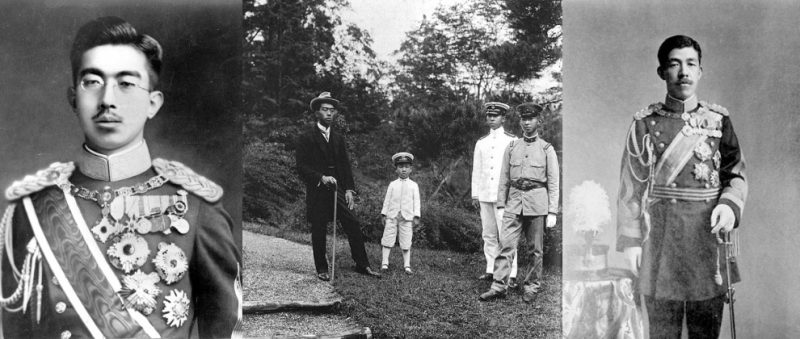Japan is a country rich in history, and a fascinating part of this journey involves its monarchy, composed of a long succession of emperors. Over the centuries, hundreds of emperors have ruled the nation, each leaving their mark in different historical periods. One of the most remarkable was the Edo Period, but in the Modern Era, four emperors stand out, including 秋篠宮殿下 (Akihito). Among the emperors of this era, 大正 (Taishō) is notable for his reign that marked significant transitions in Japan, both politically and culturally.
The Taishō Period, named after Emperor Taishō (Yoshihito), is remembered as an era of crises, wars, and profound transformations. During this period, Japan left behind the feudal system and began to experience a more modern way of thinking, although it also faced economic and political difficulties.

Table of Content
The Meaning of the Posthumous Name in Japan
The posthumous name is an important concept in Japanese culture and is directly associated with emperors. Literally translated as "after death," it is an honorific title granted to monarchs, nobles, and, in some cases, other prominent figures. In Japan, the posthumous name reflects the name of the era or period during which the emperor ruled.
Differences Between Posthumous Name and Era Name
Many times, the posthumous name is confused with the era name, but there is a distinction. The era name refers to the specific years of an emperor's reign, while the posthumous name is a way to honor the monarch after their death. There is also the “kaimyo,” a Buddhist practice that serves a similar purpose but is generally used during the individual's lifetime.
Cultural Use and Importance
In addition to emperors, in some cultures and specific situations, the posthumous name can also be attributed to high-ranking officials. In 日本, this is a symbol of respect, rooted in traditions that value the memory and legacy left by leaders.

Taishō Emperor: Life and Legacy
The Taishō Emperor, whose birth name was Yoshihito (嘉仁), was born at the Aoyama Palace in Tokyo on August 31, 1879. He was the fifth son of Emperor Meiji and Yanagiwara Naruko, a lady-in-waiting. Although Yoshihito survived childhood, which was uncommon among his siblings, he faced health issues throughout his life that influenced his reign.
Childhood and Health Challenges
Yoshihito contracted meningitis a few weeks after his birth, which impacted his physical and mental health. There are also rumors that he may have been a victim of lead poisoning from the makeup of his wet nurse. His health condition required a slower pace of learning, even with renowned teachers, such as Nakayama Tadayasu, his father's educator.
Ascendancy and Family
Declared heir to the throne on August 31, 1887, Yoshihito married Kujō Sadako (future Empress Teimei) in 1900. The marriage, arranged by his father, sought a wife who could complement Yoshihito, especially considering his limitations. The couple had four children, but one died during childbirth.
Reign and Challenges
When he ascended to the throne in 1912, Emperor Taishō faced a world in turmoil. His reign coincided with World War I, and although Japan opposed Germany, the conflict did not bring significant disruptions to Japanese territory. Japan took advantage of the situation to conquer territories and make demands on China. However, the economic instability that followed ultimately impacted the country.

The Taishō Period: Advances and Crises
The Taishō period, which lasted from 1912 to 1926, was marked by significant changes and challenges, both in the internal and external landscape. Although it started with promises of growth, the era soon faced economic setbacks and natural disasters.
Temporary Growth and Decadence
During World War I, Japan was able to monopolize the Asian market due to European weakening. There was a boom in the production of industrialized goods, such as chemicals, pharmaceuticals, and textile products. However, with Europe's return to stability, Japan quickly lost its commercial dominance, and the economic situation worsened even further with the Great Kanto Earthquake in 1923.
Social and Political Changes
The Western influence brought temporary democratic changes, such as greater participation of women in society and democratic advancements. However, these reforms did not last long. The end of the Taishō period was characterized by a resurgence of militarism and nationalist ideology, which paved the way for World War II.
Legacy and Western Influences
The Taishō Emperor was known for inserting foreign words into his speech, something that deeply irritated his father, Meiji. He excelled in activities such as horseback riding but lacked superior intellectual skills. Interestingly, he lived his entire life near Tokyo, which was uncommon for emperors of the time. His death in 1926 was due to pneumonia, ending an era that was marked both by growth and decline.
Curiosities and Lasting Impacts
- In 1921, due to his weakened health, Taishō ceded the regency to his son, Hirohito.
- Japan was positioning itself to become a world power, and in 1918, the country participated in the Peace Conference in Versailles.
- During this period, large 日本の銀行 were established and there was remarkable industrial growth.
- The end of the Taishō period saw the rise of nationalist ideas and a cultural shift that laid the groundwork for the challenges of the next decade.
The Taishō Period is an example of how political and social transitions can shape a nation's identity, influencing future events that would reverberate throughout the 20th century.
